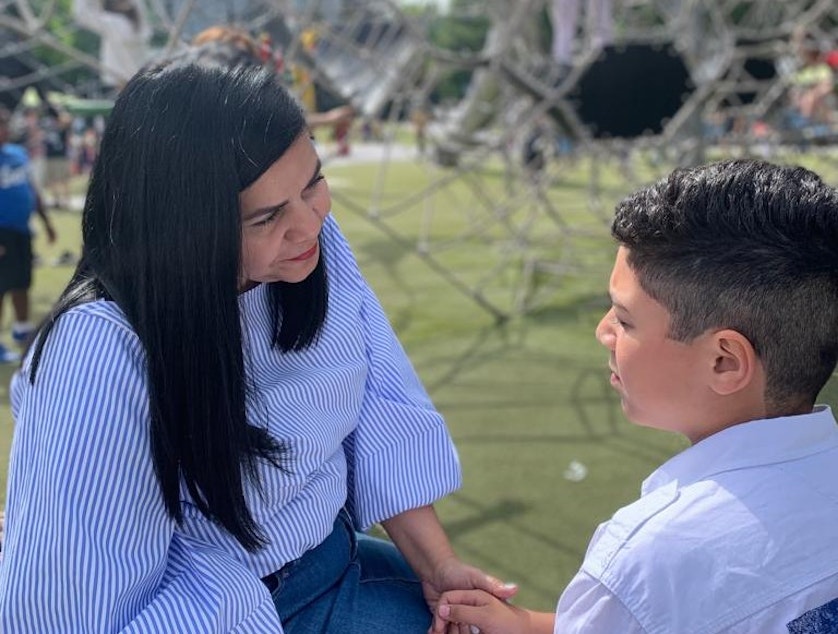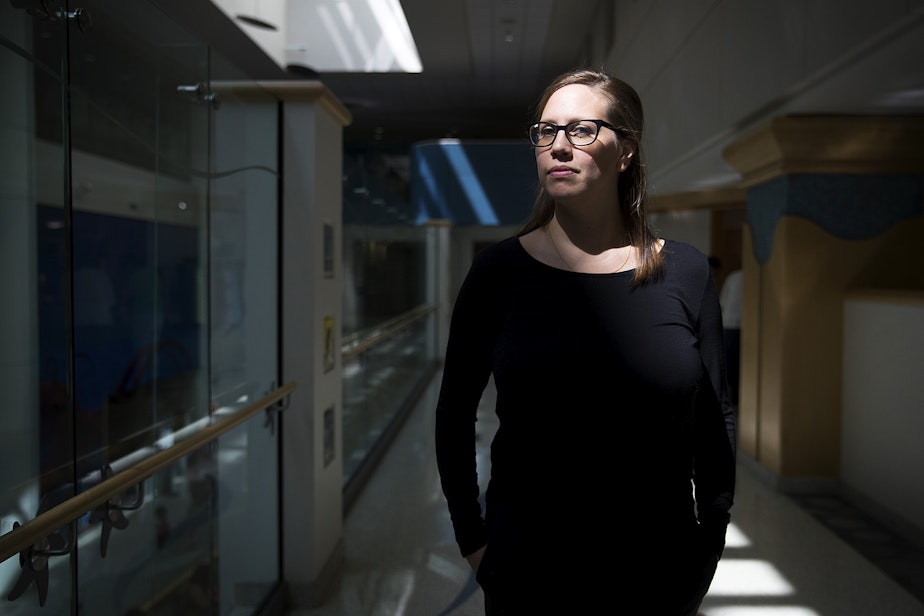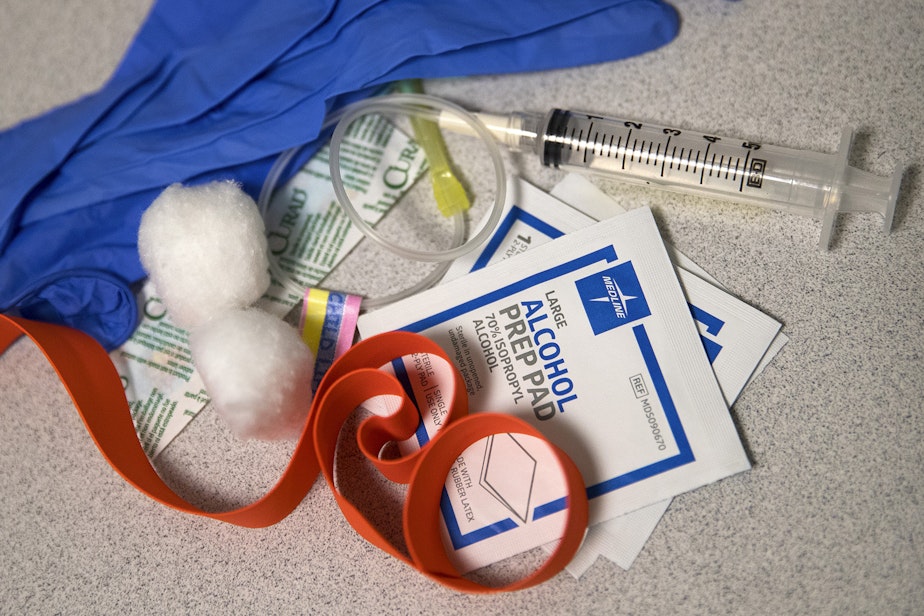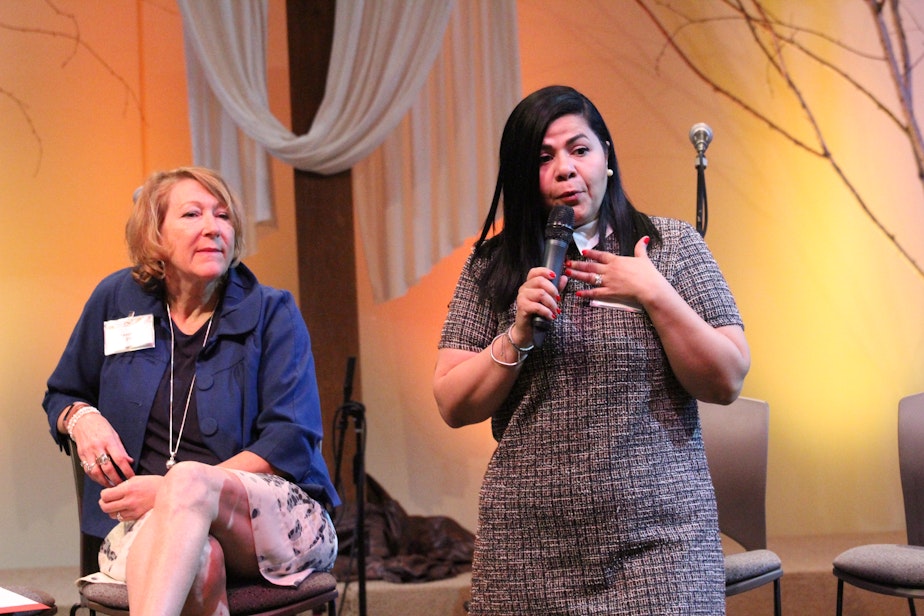When anxiety strikes in childhood, experts say get help early

W
hen Maria Barrios’ son was 5 years old, he seemed typical.
He was passionate about LEGOs. He played soccer and table tennis. He loved to swim.
But he was also a worrier. First, he worried about playgrounds and fire alarms. Then he worried about rain.
“He pretty much became like an expert on weather,” Barrios said about her son, who we are not naming to protect his privacy.
Every morning, her son checked the weather to see if rain was forecast.
“He knew what 10 percent chance of rain means," Barrios said. "He was like, ‘It’s going to rain 25 percent, Mom.'"
Then he asked if he could stay home from school.
Barrios said her son couldn’t really explain why rain frightened him. He told her it was something about the dark clouds and wind.
He still went to school, but when it rained there, he avoided the playground.
“He was hiding in the restrooms, because he didn’t want to go outside,” Barrios said.
At first, Barrios tried to accommodate her son’s fears. She kept him home if a fire drill was scheduled. The family canceled weekend trips if the weather was going to be bad. And more and more, she and her husband reshaped their home life around their son’s anxiety.
It was a teacher who convinced Barrios that she needed a new approach.
"She told me, ‘Maria, I think you need to find more help,'" Barrios said. "Because this is not going to go away; this is going to grow.”
Barrios had experienced anxiety herself. She was an anxious kid growing up in Venezuela, but it wasn't until her mid-20s that she saw a psychiatrist. Life improved after that.
Worried her son was suffering as she did, she cycled through a range of emotions. She cried, she felt guilty, she blamed herself.
Then she got on the phone to find help for her son.

I
t’s not easy for parents to decide to get help when their young kids appear to be struggling with their mental health. Parents often aren’t sure what emotions and behaviors are normal, and what are of concern.
“A lot of times families come in, and they’ve heard, 'Well this is just a phase, we heard they were going to grow out of it.' And so they just waited,” said Dr. Kendra Read, head of Anxiety Programs at Seattle Children’s Hospital.
Dr. Read said some people are like Barrios. They come in right away when they suspect that anxiety is a problem for their kids. But many families wait until anxiety becomes acute or debilitating. And that’s risky.
“When anxiety goes untreated, it leads to other anxiety disorders or depression or substance use, academic underachievement, employment difficulties and problems later in life," Read said.
Addressing problems in childhood prevents a snowball effect, she said.
At Seattle Children’s Hospital, most anxiety disorders are treated with a 9-week program that consists of talk and exposure therapy. Therapists help the kids understand their fears, learn to think differently about them, and learn ways to cope with anxiety’s intense emotions.
With exposure therapy, they gradually make the kids confront the things that scare them.
For example, some kids come in with a fear of vomiting, Read said.
“So we watch videos of babies throwing up, or Sprite banana challenge videos where people vomit. Or we make fake vomit and play with it,” she said.
By the end of that exposure, most of those kids no longer fear vomit. In fact, Read challenges them to make their own fake vomit, using ordinary kitchen ingredients. The grossest one wins a prize.
Barrios’s son entered the program at Children’s and initially received exposure therapy directed at his fear of rain. The therapists at Children’s had him watch National Geographic videos of extreme weather, first for just a few seconds, and then for longer.
Eventually, he moved on to real rain. He stood inside and watched rain from the window. Then he went outside to stand in the rain, for longer and longer periods of time.
When each exposure began, his anxiety was high, but as the exposure continued, his anxiety diminished.
At first, Barrios was unsure about exposure therapy. She worried that his anxiety would spike, and that he would be unable to sleep. But that didn’t happen.
“The results were immediately amazing,” she said.
And as her son’s anxiety around rain began to lessen, she felt her anxiety lessen as well.

T
eaching parents how to respond to anxiety is a crucial part of the therapy process.
Many parents react to their kids’ anxiety by shielding them from uncomfortable experiences, as Maria Barrios did at first.
But Dr. Read said parents should not accommodate their kids' fears — a difficult task, given that parents are wired to protect their children from distress.
“It goes against every adaptive compassionate grain in your body as a caring wonderful parents, to say, 'No, actually I need you to face that thing that is making you feel scared and nervous,'” Read said.
She said parents should not remove their children from situations that aren't objectively harmful to them.
Anxiety is highly treatable. Most of the families graduate from the program at Seattle Children’s at the end of the program, Read said. Some require additional sessions, but only about 5 percent of kids will need higher level care after that.

M
aria Barrios' son is 10 now, and doing well.
He’s not scared of rain anymore, but other fears have popped up over the years.
Once he had to go back to therapy for what the mental health profession calls "a tune-up."
“When I handle his anxiety, I’m coming from a place of being calm, being secure, being confident and knowing what I know what to do," Barrios said. "I know he will overcome this, and this is going to pass."
Barrios is now an outspoken advocate for early intervention. She speaks before parent groups about her family's journey and encourages them to get help if their kids are struggling.
If you are wondering whether your child might have a problem with anxiety, Dr. Read said consider two things.
- What is the severity of your child’s distress?
- How much does it interfere with their lives and the lives of family members?
And even if you aren’t sure what the answers are, Read said it doesn’t hurt to seek help.
Deborah Wang is spending the year doing stories on adolescents and mental health as part of a Rosalynn Carter Mental Health Journalism Fellowship. If you have a story you would like to share with Deborah, please email youthmentalhealth@kuow.org.

